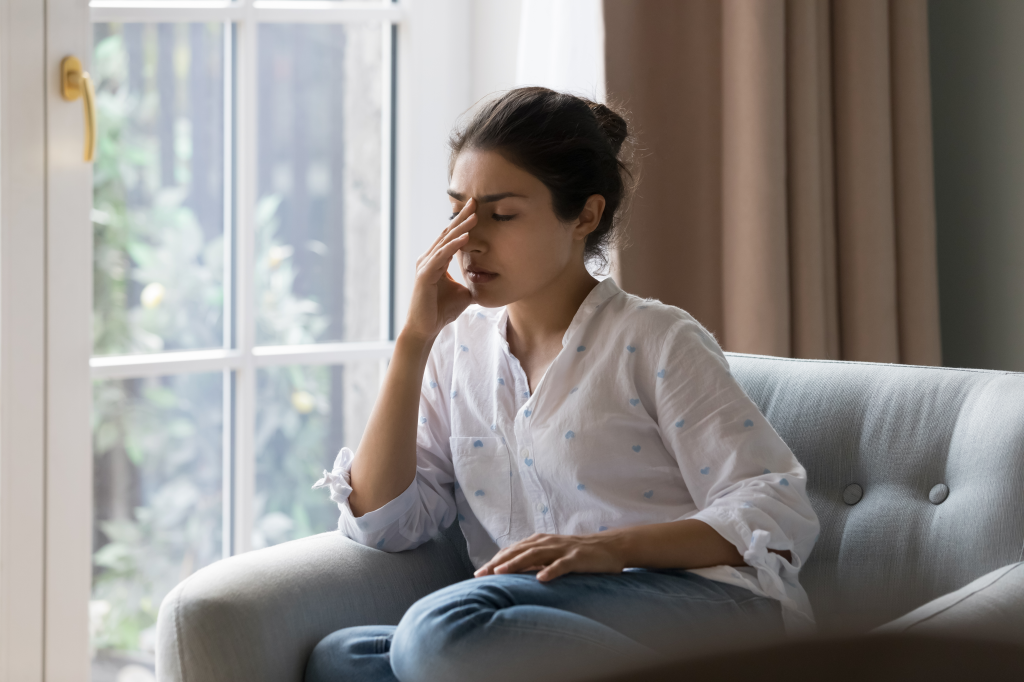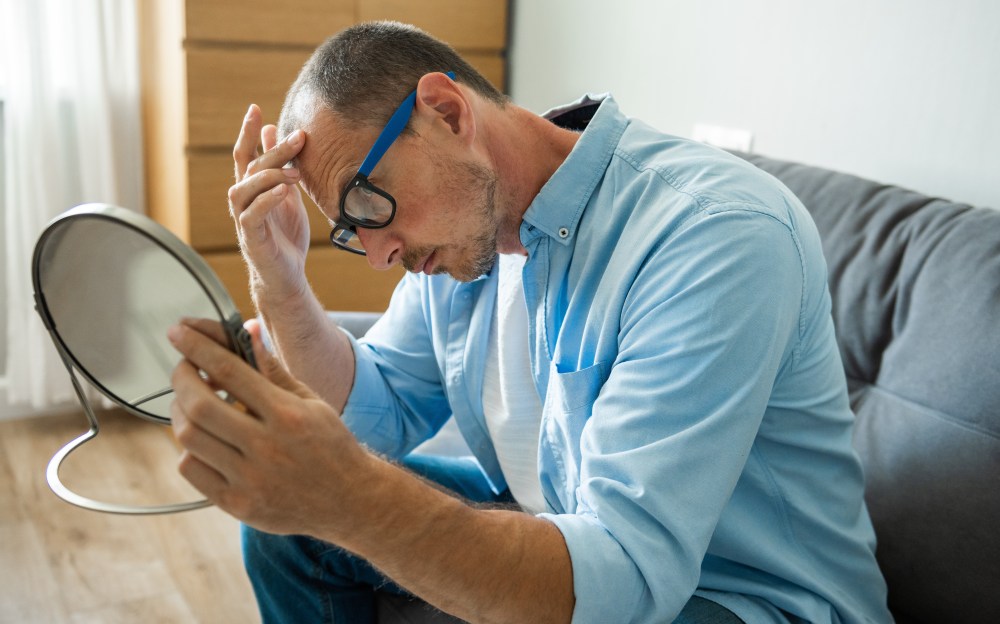At a glance
Fasting for 36 to 72 hours or more offers profound benefits beyond just weight loss. By depleting glycogen stores and triggering ketosis, prolonged fasts support liver health, mental clarity, and cellular repair. Extended fasting routines also promote hormonal balance, reduce inflammation, and may enhance stem cell function.
Prolonged fasting, typically lasting between 36 and 72 hours, has become increasingly popular due to its potential to enhance fat burning and promote weight loss.
However, the advantages of extended periods of caloric restriction go far beyond shedding a few pounds, as prolonged fasts may also help reduce inflammation and boost mental clarity.
Discover five potential health benefits of prolonged fasting and learn how it can help boost your energy and revitalize your body and mind.
What is prolonged fasting?
Prolonged fasting involves avoiding all caloric food and beverages for an extended period, usually lasting between 36 and 72 hours, or even longer.
During this time, the body is forced to tap into its own energy reserves to generate energy and begins to utilize glycogen, a stored form of blood sugar located in the liver and muscle tissue.
Once glycogen stores are depleted, the body shifts to burning fat for energy. This releases large amounts of ketones, a group of organic acids that serve as a highly effective alternative fuel source.
When ketones enter the circulation and start fueling your cells, the body enters a metabolic state known as ketosis, linked to steady energy levels, mental clarity, and various other beneficial health effects.
In addition, a lack of food intake decreases the release of insulin, a key metabolic hormone that regulates blood sugar levels and promotes fat storage.
This is confirmed by a study published in the American Journal of Physiology, which found that over the course of a 36-hour fast, the body produces less insulin, which is associated with weight loss and better metabolic health.1
Watch the video below to learn more about the amazing benefits of prolonged fasting.
Prolonged fasting vs. intermittent fasting
Prolonged fasting and intermittent fasting are two distinct approaches to time-restricted eating.
Extended fasting, lasting 36 hours or more, significantly reduces glycogen stores and insulin levels, triggering ketosis.
During extended periods of caloric restriction, the body undergoes significant metabolic and hormonal changes, including the activation of cellular repair processes known as autophagy, which may contribute to potential anti-aging effects.
In contrast, intermittent fasting typically follows shorter, recurring patterns practiced daily or weekly. Common practices include the 16:8 method, which involves fasting for 16 hours, followed by an eight-hour eating window.
Another approach is the 5:2 plan, which involves eating normally for five days and significantly reducing calories on two non-consecutive days.
Intermittent fasting has been shown to positively influence various nutrition and health markers, including blood sugar levels, cholesterol balance, and inflammatory mediators.
While both strategies promote metabolic health, intermittent fasting is commonly used for long-term maintenance, helping to stimulate fat metabolism and support weight management.
Prolonged fasting, on the other hand, provides a more intensive metabolic shift, promoting both fat mass loss and cellular regeneration through extended periods without food intake.

Five benefits of prolonged fasting
Extended food restriction practices allow the digestive system to rest and trigger powerful metabolic and hormonal changes that can have beneficial effects on long-term health.
Here are five health benefits of fasting.
1. Promotes weight loss
During extended fasting, the body depletes its glycogen stores and transitions to using stored body fat as its primary energy source.
This metabolic shift prompts the liver to break down fat for fuel, helping reduce overall fat mass and supporting steady weight loss.
Additionally, long-duration fasts increase levels of human growth hormone, which helps preserve lean mass during fasting while promoting fat metabolism.
2. Activates autophagy
Another major physiological advantage of prolonged fasting is the activation of autophagy.
“Autophagy is a natural process during which the body breaks down and recycles damaged or worn-out cellular components,” explains Dr. Berg. “This powerful repair process usually begins around 24 hours into a fast and becomes increasingly active as the fast progresses.”
Autophagy detects and eliminates dysfunctional proteins and organelles, which are tiny structures within cells that perform essential functions such as energy production and waste removal.
As a result, autophagy supports cellular health, helps lower inflammation, and may contribute to slowing the aging process.
3. Enhances stem cell function
Stem cells are essential for tissue repair and regeneration, but their activity naturally declines with age. Prolonged fasting has been shown to help reactivate and support stem cell function, promoting healthier aging.
According to research published in Cell Stem Cell, fasting was found to modulate hormonal and enzymatic pathways that enhance stem cell regeneration.2
These changes create an ideal environment for blood-forming stem cells to renew and generate a balanced supply of immune cells, which help shield the body from stress-related damage.

4. May help lower inflammation
Prolonged fasting can help lower inflammation by triggering cellular processes that regulate the immune response.
One key effect is the reduction of pro-inflammatory signaling pathways, which helps calm overt immune activity associated with inflammation.
Over time, this anti-inflammatory response may help protect against chronic conditions such as obesity, type 2 diabetes, and inflammatory health problems such as rheumatoid arthritis.
5. Supports brain health
Prolonged fasting triggers a series of positive responses in the brain that enhance neuronal function and resilience.
In fact, a study published in the Journal of Cerebral Blood Flow & Metabolism reported that healthy women who fasted for 72 hours experienced improved mood and significant changes in brain chemistry, suggesting that the brain adjusts to conserve energy and support mental clarity under stress.3
Building on these findings, fasting has also been reported to boost levels of brain-derived neurotrophic factor (BDNF), a key protein that promotes brain health, neuronal regeneration, and overall central nervous system integrity.
In particular, BDNF helps protect neurons and enhances memory and learning, especially within the hippocampus.

Tips on preparing for and starting a prolonged fast
With a clearer picture of what prolonged fasting can offer, it’s time to focus on how to get started.
Let’s look at practical steps to prepare your body and ease into your first extended fast.
Start with intermittent fasting
If you’re new to fasting or have never done a prolonged fast before, it’s recommended to practice intermittent fasting first.
This involves limiting your food intake to specific hours each day, such as eating only between 12:00 and 8:00 p.m.
Intermittent fasting helps your body gradually adapt to longer periods without food, making it easier to transition into a prolonged fast.
Choose nutritious foods
Before you begin fasting, reduce your intake of sugar and carbs to limit glycogen reserve and stabilize blood sugar levels, which can make the transition into prolonged fasting easier.
Instead, focus on low-carb, nutrient-dense foods rich in healthy fats to keep energy levels steady and support fat-burning.
Healthy Keto® is an excellent addition to any fasting regimen as it limits carbs while prioritizing non-genetically modified vegetables, grass-fed beef, full-fat organic dairy, eggs, and wild-caught fish.
Stay hydrated and support mineral balance
Staying hydrated and maintaining mineral balance is crucial while fasting.
Be sure to drink plenty of water throughout the day, and consider adding a sugar-free electrolyte powder to support your body’s needs.
Consult your doctor
Before attempting a prolonged fast, consult with your doctor if you have any pre-existing medical conditions or regularly take medication.
Your doctor can assess whether extended fasting is safe for you and provide guidance on any necessary medical supervision before, during, or after the fast.

How to end a prolonged fast
How you reintroduce food after an extended fast plays a key role in how your body adjusts and how you feel during the transition back to a nourished state.
Start with a small, easy-to-digest meal such as bone broth, soup, eggs, or avocado, to gently reactivate your digestive system.
Over the next 24 to 48 hours of fasting, gradually increase the quantity and variety of foods, focusing on nutrient-dense options that are easy on your digestive system.
Be mindful of your body’s response, and adjust your pace if you experience bloating, fatigue, or discomfort.

Safety and side effects
To fast safely, it’s vital to plan ahead and support your body throughout the process.
Avoid overeating before you begin, and have essential items, such as water, electrolyte powder, and non-caloric drinks at hand.
Maintain a light routine with a flexible exercise plan, and stay busy to help shift your focus away from potential hunger and cravings.
When it’s time to eat again, reintroduce food slowly to allow your digestive system time to adjust.
However, even with proper planning, prolonged fasting can still trigger side effects, especially if your body isn’t fully prepared.
Fasting-related side effects may include:
- Dizziness or lightheadedness
- Irritability or mood changes
- Fatigue and low energy
- Headaches
- Muscle cramps
- Difficulty concentrating
- Dehydration
- Electrolyte imbalances

Who shouldn’t do a prolonged fast
While prolonged fasting offers numerous health benefits, it may not be suitable for individuals with certain health conditions or specific needs.
Those with diabetes, especially those using insulin or blood sugar-lowering medications, may face dangerous drops in blood glucose when fasting for prolonged periods.
Individuals with blood pressure concerns should be cautious with prolonged fasting, as it can impact sodium and fluid levels. This may cause blood pressure to drop and potentially affect the effectiveness of blood pressure medications, requiring dosage adjustments.
Prolonged fasting is not safe for pregnant or breastfeeding women, or for individuals with a history of eating disorders. It should also be avoided by children, teens, and those who are underweight, as they have increased nutritional requirements.
Key takeaways
- Prolonged fasting encourages the body to burn stored body fat, which can aid weight loss and help improve metabolic and hormonal health.
- Extended fasting triggers autophagy, a vital physiological process that recycles damaged proteins, repairs dysfunctional cells, and supports cellular regeneration.
- Fasting helps reduce inflammation, supports brain health, and improves mental clarity, making it an excellent tool for overall health and vitality.
- Prolonged fasting isn’t suitable for pregnant or breastfeeding women, children, individuals with eating disorders, or those with certain medical conditions.
FAQ
1. What are the top benefits of prolonged fasting?
The potential benefits of prolonged fasting include weight loss, improved brain health, autophagy, and reduced inflammation.
2. What does prolonged fasting do for the body?
Prolonged fasting has been shown to improve metabolic health by promoting fat burning and reducing insulin resistance. It can also help regulate blood sugar levels and help lower inflammation in the body.
3. How much weight can I lose on a prolonged fast?
The amount of weight loss during a prolonged fast can vary depending on several factors, such as your starting weight, body composition, and the duration of the fast.
However, fasting for 36 to 72 hours typically leads to a noticeable drop in body weight, with some individuals reporting weight loss of up to 2 to 5 pounds.
4. What are the stages of prolonged fasting?
Within the first 24 to 48 hours of fasting, the body depletes its glycogen reserves, prompting the liver to begin converting stored fat into energy.
At the same time, repair processes such as autophagy become active, while insulin levels decline, which helps reduce inflammation and support overall cellular health.
5. What should I eat after a prolonged fast?
It’s important to break your fast gradually and avoid heavy or processed foods. Start with easily digestible, nutrient-dense options like bone broth and leafy greens to gently ease your digestive system back into action.
6. Is a 48-hour fast enough to induce autophagy?
Yes, a 48-hour fast is generally enough to induce autophagy, as this cellular repair process typically begins around 24 hours and becomes more active the longer the fast continues.
Sources
- https://pubmed.ncbi.nlm.nih.gov/33284087/ ?
- https://pmc.ncbi.nlm.nih.gov/articles/PMC4102383/ ?
- https://pmc.ncbi.nlm.nih.gov/articles/PMC5851137/ ?


















